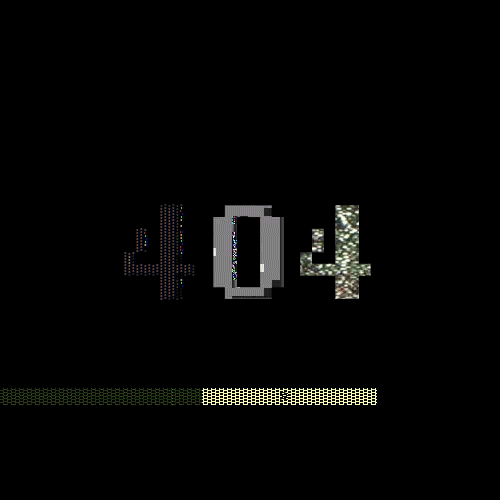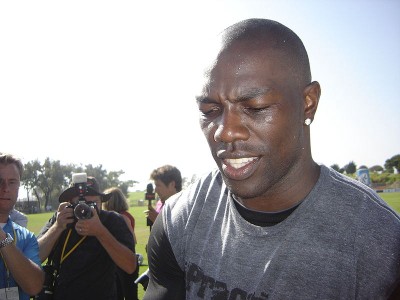Corrections Get Meta
“An article on Tuesday about the foolishness of making precise predictions in science misstated the number of developments that the writer said would not come true in 2011. There were 9, not 10. The article also misstated the date of a correction in which The New York Times finally apologized for having ridiculed, in 1920, the idea that rockets would one day be able to leave the surface of the Earth. The correction was published on July 17, 1969 — a day after the Apollo 11 moon mission began; it was not published on June 17 of that year.”
Ostentatious Building Looks Stabby

“Dubbed the ‘Electric Razor’ for its three huge wind turbine blades at the summit, the Strata has been equated to a piece of ‘chav’ architecture that wears its environmental credentials like a Fred Perry logo. It has been criticised for its brashness and its ‘stridency’, two descriptions which, in the past, would have been proud synonyms for high-rise structures. Today, however, this flagrant behaviour is as unacceptable in our civic architecture as anti-social behaviour is in our civil society, it seems.”
— Architects in Britain are debating “beauty,” and also debating the debate about “beauty.”
The Week That Everyone Was Disappointed and Astounded

•We were forced to wrestle once again with the menacing visage of Courtney Love.
• We dealt with the death of owning books in the age of the Kindle and how that fits in with understanding why today’s hot web ideas arrive and die.
• For no particular reason we decided to learn how to properly enjoy Four Loko.
• Our Thanksgiving cookbook is growing ever more frightening and it will become truly terrifying by the time that horrorful day arrives.
• And we thought about dead bodies and then decided to embrace the word “lungry” and tried to exorcise the jingles we’ve heard in our head since we were five years old.
Terrell Owens, Alien

It is saying something, and not something good, that the best programming on VH1 generally features the poreless, marzipan-faced vanity doctor Dr. Drew Pinsky. Pinsky’s creepy self-assurance is unpleasant everywhere it appears, but there’s a rawness and bleak exhaustion to VH1’s Pinskyfied televised celebrity rehab franchise that’s occasionally bracing. I write this knowing that the words “televised celebrity rehab franchise” are about as unpleasant as the language gets, and in the understanding that some people’s reaction to watching a scabby, furtive Tom Sizemore sweat out the shoulder of a decade-long meth high might be less generous than mine.
Measure the Pinsky-related programming against the network’s other reality efforts, though, and it looks brilliant and luminously humane. There’s a nonzero chance that VH1’s other shows are some sort of elaborate situationist prank — a cruel exercise in the manufacture, branding, re-branding and disposal of pre-ruined celebrities, or something. But there’s a far larger chance that the rest of VH1’s reality slate — which includes not one but two shows featuring members of the Cincinnati Bengals receiving corps — is just what it looks like: a nasty, cheapjack exercise in abased and abasing hate-fuckery. Bengals wideout Chad Johnson’s VH1 program is called “The Ultimate Catch,” and it is a competitive dating show seemingly shot, after giving everything a hasty zotz of disinfectant, in Bret Michaels’ “Rock of Love” manse. It’s terrible and dull and fake. Terrell Owens’ reality show is named “The TO Show.” It is, as befits its star, stranger, sadder, more interesting and yet somehow also infinitely more difficult to watch.
It’s not as strange as it seems that VH1 is programming shows involving hugely successful NFL millionaires alongside tossed-off competitive reality shows pitting defective alcoholic narcissists who once jousted for an opportunity to french Poison’s lead singer against other defective alcoholic narcissists who once competed for a similar make-out opportunity with a woman who once actually frenched Flavor Flav. (It’s complicated.) There are actually a host of sports-related reality programs on VH1, most of which end in the word “Wives” — ”NBA Wives,” “NFL Wives,” so on — and they are generally racially diverse, extra-fake rips of Bravo’s loathsome “Real Housewives” thing. Lots of sloshing, 12-ounce glasses of chardonnay, lots of booze-powered arguments over producer-mandated “lunches” in empty mid-afternoon restaurants, lots of Gruden-grade micro-analysis of confusing interpersonal feuds between well-heeled, spacey-eyed winezillas. If these shows reveal anything, it’s that the wife of Lakers forward Matt Barnes is incredibly drunk, and someone should make sure she gets home okay. Owens’ show isn’t like these, in part because he doesn’t appear to drink and isn’t married and seemingly doesn’t leave his immaculate Los Angeles home very often.
It bears mentioning that the things that set Terrell Owens’ VH1 reality show apart from its counterparts do not necessarily make it any better. The network’s doofy puppet masters do their best to turn “The TO Show” into something like their other adventures in leering, chuckleheaded artifice — Owens’ two female co-stars, poignantly identified as “his best friends and publicists,” provide voice-over of what sounds like the minutes from some coke-rushed story meeting. “Today, Terrell is going on a talk show to talk about sex,” or “Terrell is accompanying Kita to birthing class.” Corny, fake-as-hell stuff underscored with insulting, get-a-load-of-this musical cues. Owens makes a handsome but stunningly awkward leading man, and is patently uncomfortable and seemingly bored in any situation not explicitly related to himself — the slide-whistle sound cues are not necessary, in other words.
That half-vexed discomfort with humans not named Terrell Owens — and, more generally, the way in which Owens comes off like a very physically fit alien — is what makes the real-life TO Show so interesting. Owens is, unexpectedly and not uninspiringly, in the middle of what looks like one of the better seasons of his career at the age of 36, while playing as the nominal second receiver in Cincinnati behind the aforementioned Johnson. In his current iteration, much more so than in his VH1 incarnation, Owens remains pretty fascinating — like Kanye West, Owens’ peculiarly melancholic narcissism is so vast and strange and inescapable that it adds unintentional depth to his own proud, titanium-clad shallowness.
In the same way that everything in Kanye’s world and work seems to collapse, crushingly, on the vast significance of Kanye — witness how he answers questions about bum-rushing Taylor Swift with the grave portentousness generally associated with clergy — Owens seems fundamentally incapable of understanding a world beyond Terrell Owens. In last week’s column, I lumped Owens in with Randy Moss and the sport’s other toxic wideouts — receivers who refuse or resist the inherent interconnectedness of football because their attunement to their own virtuosity makes the necessary surrendering of self impossible. I think, to an extent, that I made a mistake in doing that. Owens has indeed wound up in the same place as Moss — a well-compensated, somewhat disreputable itinerancy marked by flashes of transcendent play and transcendent vanity. Where Owens is different, though, is in how out of control he seems. If Moss gives the impression of a vain, dickish man of freakish ability who can’t be bothered not to be vain or dickish, Owens comes across as a more desperate case — someone who has not demonstrated an ability to be anything but what he is, and who remains stubbornly puzzled by the world’s consistently negative response to that.
Which is not to say that Owens is blameless in his dickery, or that his vanity takes an especially pleasing form. His strange, childish gay-baiting of Jeff Garcia, who threw to him when Owens was at his early-career height in San Francisco, was pretty gross, even as it hinted at the depths of just how weird Owens is — I joked a couple weeks ago in one of those free-association exercises with Jeff Johnson that Owens seemed legitimately unable to come up with a reason why he didn’t get the ball 20 times per game besides Garcia being gay, but I wasn’t totally joking in that. The not-joke being that Owens had a shortage not only of empathy, but simple understanding. He doesn’t get other people, in short, and has consistently shown himself unable to understand that their lives as non-TO beings could matter as much as his.
That pattern of behavior continued. When he was with the Eagles, Owens opted to engage in the hilariously provocative “celebration” of running halfway down the field after scoring a touchdown, in order to spike the ball off the Cowboys logo; few have worked harder for an unsportsmanlike conduct penalty. The recipient of the one bit of generous-seeming touchdown celebration in which Owens has engaged — autographing a ball he’d just caught for a touchdown and handing it up into the stands, back when he was playing for the Cowboys — was later revealed to be the receiver’s financial manager. Later in his Dallas tenure, Owens tearfully went public with his suspicion that quarterback Tony Romo and tight end Jason Witten were conspiring to cut him out of the offense by devising plays in a series of secret meetings — an explanation of a simple-enough thing so convoluted that it was basically a 40-minute Donald Sutherland monologue and swishy Kevin Bacon cameo away from being a JFK outtake. The simple-enough thing being something that keeps on happening to Owens, and which he keeps being unable to understand: everywhere he has played, Owens’ radical absence of empathy has alienated everyone around him. Moss, at least, is widely beloved by his teammates — it’s coaches who can’t stand him. Despite having few equals at his job, Owens has few defenders anywhere.
Indeed, despite the best efforts of VH1’s noxious string-pullers to make it appear otherwise, Owens appears to have few functioning human relationships of any sort — if there’s any person on earth whose best friends might actually be his publicists, Owens appears to be him. In “The TO Show,” he rattles around his instant mansion like Charles Foster Kane through his bleak, echoing xanadu, if only Kane had been the type to wear sunglasses around his own home. The show’s producers set Owens up with a series of famous cameo-buddies, with whom he has interactions so stilted as to be almost poignant. They set Owens up on dates with beautiful models and actresses and he smiles through them with a look on his face that suggests he’d really rather be somewhere else, maybe doing crunches or being photographed with his shirt off. A vague smile is his default expression on the show, and in his press conferences as well — whether it’s the result of media training (big energy!) or an abiding solipsism that delights in the basic experience of hearing its own voice is hard to know.
The question of whether or not Owens is a nice person is immaterial, but, more importantly, somehow beside the point. Owens, for all his public umbrage and despite the vulnerability he revealed in spinning his Dallas conspiracy theory — and in a strange, subsequent might-have-been suicide attempt — generally seems so subsumed by his vanity as to have disappeared within it entirely. There’s something alien and vague about anyone living in a world that small and over-curated, and Owens’ perfect physique and odd agelessness — he is on track for career bests in receptions and touchdowns in his 15th NFL season, which is not something that generally happens — further that impression. There’s something melancholy about it, too — both because Owens seems frustrated that others can’t love him as fully as he does himself, and because of the transparent neediness undergirding his epic vanity. But mostly, Owens gives the impression of someone unfinished, doomed to stalk the halls of an elaborate monument to himself that he’ll probably never complete.
The Bengals are 2–6, and their notional number one receiver — Johnson, by far the sunnier egomaniac of the two — was so frustrated and obstreperous during the team’s Week 9 loss that he was nearly in tears at the end of the game. After that game, Owens remarked that the Bengals were “the best 2–6 team I’ve ever been on.” Owens was coming off a great game — 10 receptions, 141 yards, a pair of touchdowns, the first of which he celebrated with an elaborate mime routine. In his postgame presser, which you can watch here, Owens is immaculate in a fur-lined vest and big sunglasses. He says many of the right things, but the overall impression is jarring — you’re observering someone forgetting and remembering and then re-forgetting the rules, someone aching to be alone with himself. Whatever Owens’ smile betrays or conceals, wherever it is that he clearly cannot wait to get away to, it seems far prouder and far lonelier than what most of us would identify as reality.
I am not trying to brag, picks-wise, but I am now officially tied with a freaking coin. So what I’m saying is that you should definitely bet all my picks this week. Especially New England/Pittsburgh. I’m really sure about that one. Anyway:
Week 9 (and overall): David Roth: 9–3–1 (62–61–8); Al Toonie The Lucky Canadian Two-Dollar Coin: 5–7–1 (62–61–8)
Sunday, November 14
• Minnesota (-1.5) at Chicago, 1:00 pm — DR: Minnesota; ATTLCTDC: Chicago
• New York Jets (-3) at Cleveland, 1:00 pm — DR: Cleveland; ATTLCTDC: Cleveland
• Carolina at Tampa Bay (-6.5), 1:00 pm — DR: Tampa Bay; ATTLCTDC: Tampa Bay
• Tennessee (-2) at Miami, 1:00 pm — DR: Tennessee; ATTLCTDC: Tennessee
• Cincinnati at Indianapolis (-7), 1:00 pm — DR: Cincinnati; ATTLCTDC: Indianapolis
• Detroit at Buffalo (-3), 1:00 pm — DR: Detroit; ATTLCTDC: Detroit
• Houston at Jacksonville (-1.5), 1:00 pm — DR: Houston; ATTLCTDC: Houston
• Kansas City (-1) at Denver, 4:05 pm — DR: Kansas City; ATTLCTDC: Kansas City
• St. Louis at San Francisco (-6), 4:15 pm — DR: St. Louis; ATTLCTDC: St. Louis
• Dallas at New York Giants (-14), 4:15 pm — DR: New Jersey G; ATTLCTDC: New Jersey G
• Seattle at Arizona (-3), 4:15 pm — DR: Arizona; ATTLCTDC: Seattle
• New England at Pittsburgh (-4.5), 8:20 pm — DR: Pittsburgh; ATTLCTDC: New England
Monday, November 15
• Philadelphia (-3) at Washington, 8:30pm — DR: Philadelphia; ATTLCTDC: Washington
David Roth co-writes the Wall Street Journal’s Daily Fix, contributes to the sports blog Can’t Stop the Bleeding and has his own little website. And he tweets!
Brief Verse Inspired By Recent Penile Enlargement Spam

It’s very beautiful!
When you have a big penis!
It’s the kind of thing that makes a fellow proud!
It’s quite alluring!
When you have a big penis!
There’s a joy to knowing how well you’re endowed!
Life’s full of splendor!
When you have a big penis!
For the privilege some would tender any price!
It’s rather splendid!
When you have a big penis!
But it’s probably more important to be nice!
Tina Brown Pleased With Glass Ceiling-Smashing

“I’m the first woman editor of Newsweek, which is very exciting. You know that in the 1970s, the women editors of Newsweek launched a lawsuit against the management because there were hardly any women doing anything of any consequence on the magazine. And women’s liberation took over and they hired the great lawyer, Eleanor Norton, and they went to battle for their rights. I feel that it — you know, a merger has created what the lawsuit couldn’t.” What a difference forty years makes.
Lady Who Wants More Chain Stores in Williamsburg to Have Eyes Rolled at Her
Pity Shari Lind, who just made herself (and her son, Sawyer!) the target of anti-big box wrath in Williamsburg.
Lentil Loaf
by Mary Phillips-Sandy

When I say that I used to celebrate Thanksgiving by eating lentil loaf, most people need a moment to process the phrase. Thanksgiving lentil loaf? Should those words be next to each other? (I blame this reaction on the icky sound of the word “loaf,” not anti-vegetarian bias, but who knows.)
My foray into meatlessness began in junior high, after a biology teacher slipped me a copy of Frances Moore Lappé’s Diet for a Small Planet. To this day I’m not sure why she did that. Maybe she sensed my budding interest in economics, politics, the environment and intersections thereof. Maybe she figured I was already doing poorly with the whole “fitting in and making friends” thing, so I might as well have a valid excuse to avoid the cafeteria.
If Lappé’s book had just focused on the plight of baby veals, I am pretty sure I would have sniffled a little, gotten over it, and gone downstairs for a bologna sandwich. But Diet for a Small Planet did something else. It named hazy concepts I’d already encountered without knowing what to call them, or how to handle them, and it told me exactly what to do about them. Suddenly everything made sense. Also, everything was connected. My mother’s Dorothy Day poster. My father’s Doonesbury books. The California table grapes we weren’t allowed to buy. The hockey players who slammed hammy fists into lockers to make the nerds jump.
The next morning I marched into the kitchen and informed my parents that I would not be having any meat that day, nor the next day, nor the day after that. I did not want the beef stew that my mother was assembling. Turkey? Do you have any idea how inefficient turkey is, on an input-per-calorie basis? After listening to me rant about soybeans and soil erosion for a few months my mother gave in and read Diet for a Small Planet. After that she ordered copies of Vegetarian Times and the Moosewood cookbook, because if my family believes in anything, it is the strategic acquisition of knowledge.
Then my mother opened the fridge, closed it again, and informed my father and my brother that it didn’t make sense to keep eating meat. My brother was too young to argue and my father is both absurdly easy-going and fond of produce, so all of a sudden we were vegetarians.
For our first meatless Thanksgiving we made my grandmother’s stuffing and baked it in squash halves because holiday meals are supposed to have stuffed mains. It tasted good, and squash-and-bread carb comas are just as intense as turkey comas, which seemed appropriate too. Then, flipping through a copy of Vegetarian Times, I discovered something called lentil loaf: cooked lentils, oats and shredded carrot, seasoned and baked. My parents remembered grim bean-and-grain loaves from the seventies, but this one looked almost like real meatloaf, plus it came with a recipe for a fancy pureed red pepper topping.
I made it, and it was tasty. After we modified the original recipe to make it less bland, lentil loaf became a suppertime staple. Most nights we were too harried for the pepper puree, but lentil loaf, like meatloaf, benefits from ketchup. It’s even good cold and on sandwiches. We never thought of it as a particularly festive dish until one year, as we sat in the kitchen talking about carbs to put in our squash, someone suggested making the lentil loaf for Thanksgiving. Why not? You carved it, sort of. And it was protein. And it made good leftovers.
From then on lentil loaf became synonymous with Thanksgiving. To make it feel more special we’d bake it in a casserole dish instead of an ordinary loaf pan; this had the bonus effect of creating more crispy top. Since our extended family lives far from central Maine there was no one to complain about the lack of turkey. It was just the four of us eating lentils and watching “Law and Order” marathons.
Of course, I was the one who fell first. With no warning, after twelve years of vegetarianism, I began craving poultry. I had moved to New York by then and I found myself lurking outside Kennedy Fried Chicken, sniffing. I had no weird sense of moral superiority about not eating meat, I just didn’t think it was logical, and I had become squeamish about the idea of putting dead birds in my mouth. But oh, that smell! And oh, those drumsticks in those buckets!
One afternoon, as I was walking to the subway with a friend, I became distracted by a pigeon. It waddled ahead of us, a large bird with a fine breast. So plump. So moist. I knew my thought would sound wrong. It came out anyway. “That pigeon looks delicious,” I said. A few hours later I was in Brooklyn, face to face with a grilled chicken cutlet sandwich. My friend told me it was for my own good. It was.
My parents held out for another two years, so our holidays remained meatless. Habits are hard to break, and as my mother pointed out, if she didn’t crave meat, why eat it? It was a piece of barbecued chicken at a state fair that did her in. I think my father was relieved, though he was too polite to say so. That left my brother, who went through college avoiding meat — not a difficult decision in most dining halls — but within months he was ready for bacon.
A few years ago, for the first time since the pre-Lewinsky Clinton White House, my family made turkey on Thanksgiving. We agreed to spend a little extra on a non-Purdue bird that hadn’t spent its life wallowing in poop and Monsanto, and when my father carved a slice for me it was every bit as delicious as I’d remembered. Maybe even better.
Of course, lentil loaf is still pretty good too.
You need:
1 cup dry red lentils, rinsed
2 cups water
1 cup rolled oats
1 egg or equivalent vegan egg replacer
1 cup cooked brown rice
1 packed cup grated carrot
2 tablespoons soy sauce or tamari
1 tablespoon ketchup (use Worcestershire if you don’t care about anchovies)
1 small onion, finely chopped
2 large cloves garlic, minced
1 tsp. dry sage + 1 tsp. dry thyme, or 2 tsp. poultry seasoning (ha!)
Lots of black pepper
Put lentils and water in a medium pot. Simmer for 15–20 minutes, adding some extra water if it looks dry. They’ll get mushy, that’s okay. While they’re cooking, preheat the oven to 350 and oil a loaf pan, 9″ cake pan or casserole dish.
Combine the cooked lentils with all the other ingredients in a large mixing bowl. Spread in the prepared pan. Bake for 35–40 minutes (a shallow dish goes faster), until the top is nice and crusty. Let it stand for 5 minutes before slicing or “carving.”
Mary Phillips-Sandy lives in Portland (not Oregon).
Illustration by Susie Cagle.
